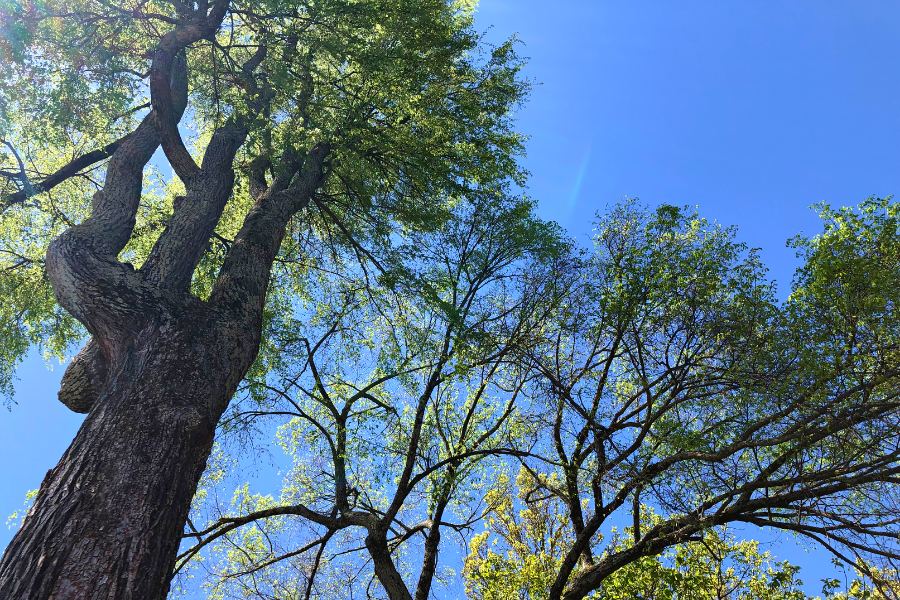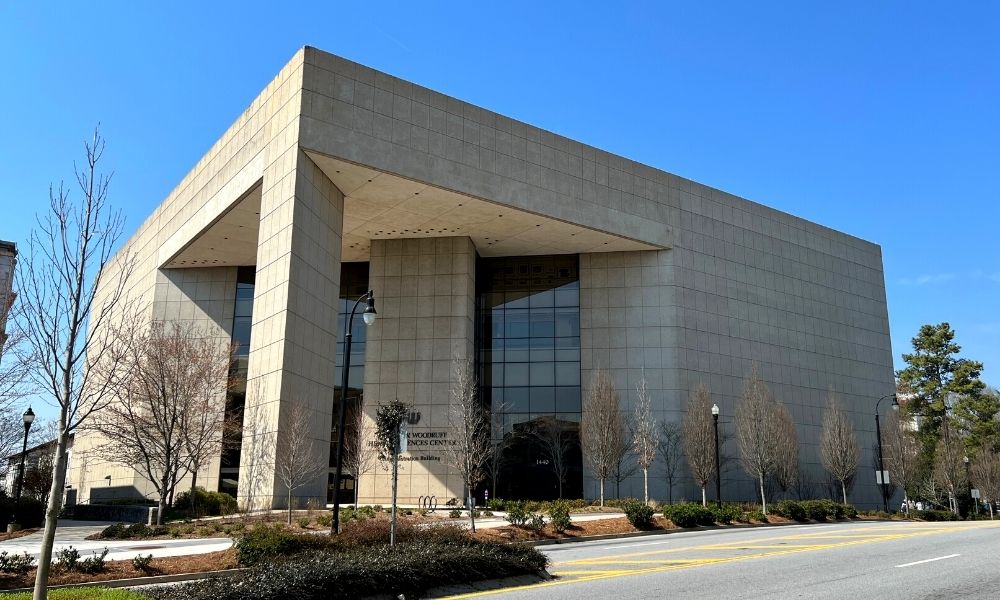Baron DeKalb Chapter & A Magazine of Opportunity for the D.A.R
The Baron DeKalb Chapter of the Daughters of the American Revolution and how they have grown through print media.
By Nemain Morgan-Curtis, Agnes Scott College intern, Winter 2022
Blame the Gilmore Girls. When I was searching through the DeKalb History Center’s extensive archival list and saw the acronym DAR, it caught my eye. I immediately thought of the early-2000s TV show. On the show, Emily Gilmore is the grandmother to Rory and mother to Lorelai. She is also a member of her local chapter of the Daughters of the American Revolution, or DAR. Gilmore Girls represented the DAR as an old-money institution that served as a ready-made punch-line for the more rebellious Lorelai. However, besides the teas that Emily hosts and one major event she has Rory attend, viewers don’t learn much about the DAR as an organization. This semester, I got the chance to learn more about the DAR in a course on the history of Conservatism that I am taking at Agnes Scott College, where we studied Phyllis Schlafly, who was a longtime member of the DAR. Because of this, I became intrigued by the organization’s history and have endeavored to learn more. In addition to looking at the archival materials at the DeKalb History Center, as well as a few outside sources, I was able to get in contact with the Baron DeKalb chapter of the DAR and conduct an interview with a current member, Lee Camp, via email. Together these sources paint a picture of an organization that has provided an avenue by which some women who had been previously left out of the conversation, could become more involved in politics and other professional fields, especially through the use of the society’s monthly magazine.
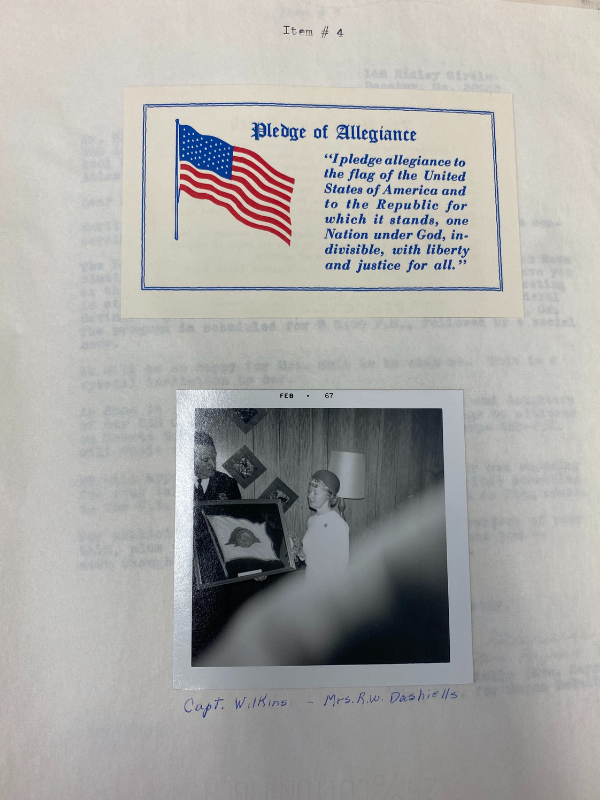
Image of Mrs. Dashiells in the Baron DeKalb Chapter Scrapbook. From the DeKalb History Center Archives.
According to The National Historical Magazine (1940), the National Society of the Daughters of the American Revolution was fostered out of the “need for an organization in which descendants of Revolutionary patriots might unite for the preservation of ideals and for service to their country.” Before the DAR’s founding, a similar organization, the Sons of the American Revolution did exist, but they did not accept women as members. The DAR became an official organization in October 1890, but did not receive its charter from Congress until May 1896. According to a history presented to the Baron DeKalb Chapter by Aline McKinney Dashiells, since its founding, the DAR has operated on three main ‘objects’: patriotic, historical, and educational (6). Its founders were also all engaged in what were considered, by scholar Carol Medlicott, “popular feminist” causes of the time including suffrage, women in the workplace, and regulations against domestic violence (103). In their founding, through these objectives and ideals, they sought to revive patriotism, and within a few years, had established many chapters all over the country.
Interview Excerpt
Nemain Morgan-Curtis: Tell me about the Baron DeKalb DAR. What is it like? How would you describe it to someone?
Lee Camp: The Baron DeKalb Chapter is a diverse group of women brought together by their shared interest in remembering and honoring the history of our country and a desire to share that love of country with others by volunteering their time and talent to the community.
NMC: How has the chapter changed since its founding? Is there anything that hasn’t changed?
LC: In the 110 years since its founding, the Chapter has changed much as the United States as a whole has changed; Women are now much more involved in all aspects of society. What has not changed would be the members commitment to serving their community by preserving history, promoting patriotism and education.
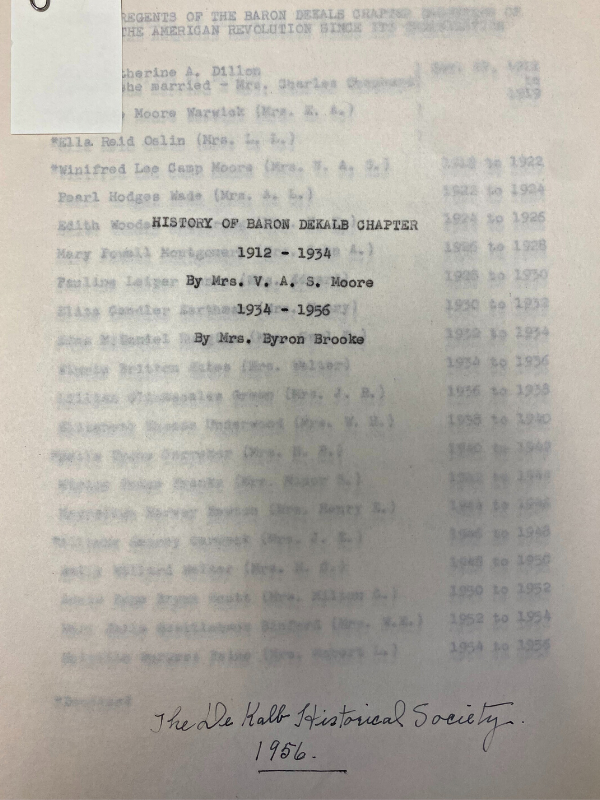
The front cover of the History of Baron DeKalb Chapter. From the DeKalb History Center Archives.
The Baron DeKalb Chapter of the DAR was originally organized in November of 1912 in Clarkston, Georgia. The organizer and first regent of the chapter, according to Mrs. V.A.S. Moore’s “History of Baron DeKalb D.A.R.,” was Miss Catherine Dillon. Based on Moore’s history, the main goals of the chapter, at least in its founding, really focused on supporting the schools and the teaching of American history. Additionally, Moore states that “the roster of no chapter contains more teachers, musicians, professional women and consecrated young mothers” (6). This included two distinguished writers who were members: Mary E. Bryan and Ella Powell. The wide variety in their membership base has distinguished it from other chapters. This is important because it shows how the organization, and this chapter in particular, have developed over time. In addition to this, the DAR has provided an opportunity and support network for women seeking fulfillment in, but also outside of the home. At its core, however, as stated on their website, the chapter’s main principles are “God, Home, and Country.” This provides the basis for everything they do, and must be considered in order to put their work and membership in context.
NMC: The DAR as a whole used to publish a magazine. Do they still do so? How important do you think the magazine was to the organization in its youth? Is this a way of centralizing a decentralized body? What other ways do you all come together as a collective?
LC: The DAR publishes two magazines. American Spirit contains articles related to the Colonial Period in American History. Daughters is a newsletter that is limited to DAR members where organization business and news is disseminated and where state organizations and chapters can share their activities. DAR also uses Blog Posts, Facebook, Instagram and websites to connect members and reach out to new members. Chapters come together for meetings and volunteer events. Members attend state and national conferences.
Though the DAR operates with a decentralized structure, the various chapters are linked through a national monthly magazine. It was started in 1892, only two years after the organization’s founding, and was published out of Philadelphia, Pennsylvania. As they grew in size and continued to establish chapters throughout the United States, this magazine became important to bring the chapters together and in providing streamlined updates. However, the magazine was more than just what might now be considered an update seen in an email. The magazine issues included historical pieces, congressional updates, genealogical department work, treasury reports, honor roll, work of the chapters, advertisements, and even socio-political pieces. According to the DAR, as the organization’s official publication, the magazine stands
“For love of Country.
For service to the Country.
For unswerving loyalty to the Government.
For inculcating these principles in the children, both native and foreign born.
For encouraging the study of American history.”

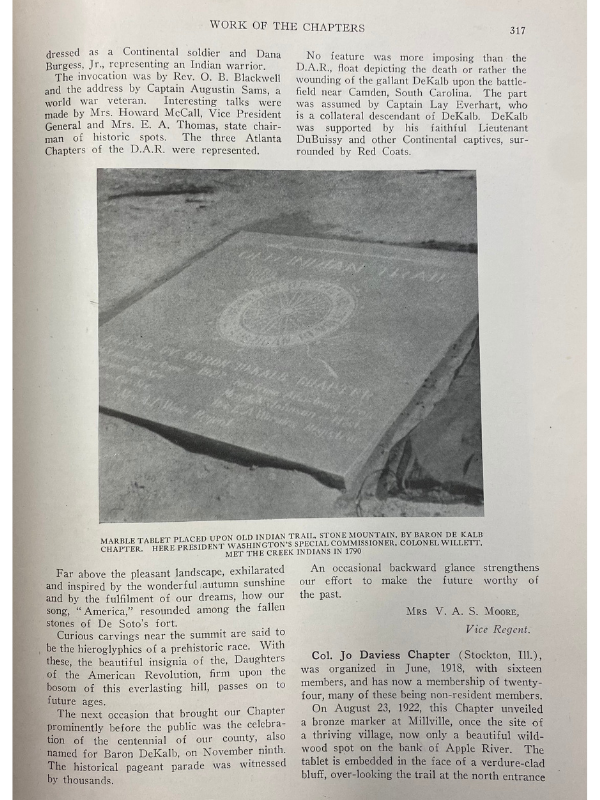
The Baron DeKalb Chapter’s feature in the May 1923 issue of the DAR Magazine. From the DeKalb History Center Archives.
In the May 1923 issue of the DAR Magazine, the Baron DeKalb chapter was recognized in the ‘Work of the Chapters’ section. They were congratulated on behalf of the National DAR for their commemorative marble tablet placed upon the Old Indian Trail within Stone Mountain Park, where, according to the magazine, President Washington’s Special Commissioner, Colonel Willett met with “Creek Indians” in 1790 (317). The recognition in the DAR magazine points to the significance of this event, as well as to the types of work the national organization recognized as being of importance.
The magazine was produced during the onset of a boom in this sector of new print media. It provided a new avenue by which people could connect. According to Carol Medlicott, “Without question, the magazine enabled the DAR to better communicate its national agenda down to the local levels, but also to transform local initiatives into broader discourses with truly national appeal” (102). Although the main reader base was members, it also circulated beyond, especially within political circles. This is important because while the magazine was important to its members, it also gave space to inform and even persuade the larger public about issues that the organization was passionate about. It allowed the DAR and its members to be involved in conversations that they had previously been kept out of. Additionally, Medlicott states that the magazine helped create “a sense of national kinship among far-flung readers, most but not all of whom were Daughters” (102). This is what made it more than just an organizational magazine, a traditional women’s magazine, or even a community-based magazine, which is clear from a comparison of the DAR’s magazine to other periodicals.
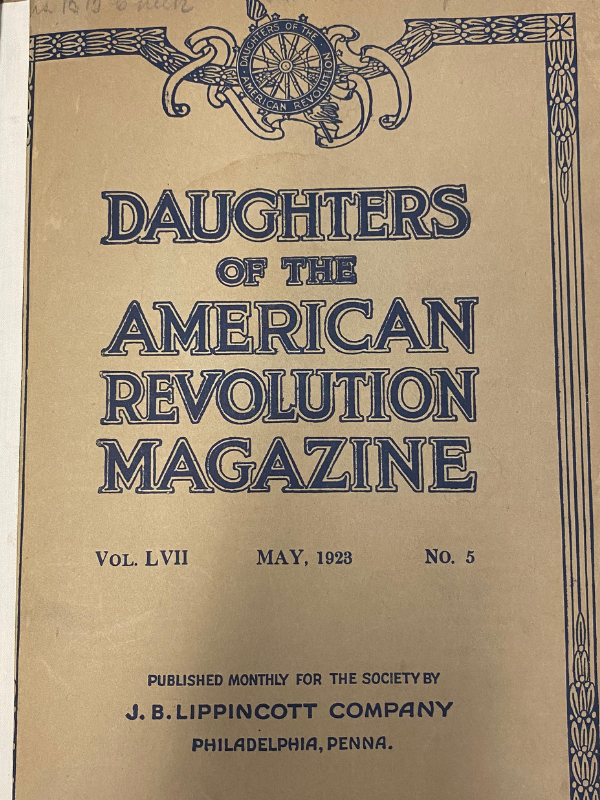
The front cover of the DAR Magazine. From the DeKalb History Center Archives.
All of these types of magazines have existed since the nineteenth century, but were most popular in the twentieth century, especially in Georgia. For example, Georgia Life Magazine included letters from readers, some family genealogy, advertisements, recipes, poetry, and articles about the economy, as well as agriculture and the outdoors. It was written and produced by men and women in Georgia for Georgians, but the majority of the magazine seems to be targeted at women, with many themes surrounding children and the family. Another example of a community-based magazine in Georgia, from a little bit later in the twentieth century, is Up Close and Personal in Tucker. Similarly, to Georgia Life, the magazine features some repeating types of stories, such as pet talk, shop talk, and tech talk, as well as a cover story, advertisements, and others that are relevant to the Tucker area. While both of these magazines have similarities to that of the DAR, they are also quite different in their purpose. Both Up Close and Personal in Tucker and Georgia Life are community-based magazines that have their main audience rooted in their communities. Additionally, they are more entertainment and consumer-based magazines. The DAR Magazine was more than this. It was an opportunity for the organization to promote its initiatives, but also keep their foot in the door politically, providing an avenue to do this that had hitherto not existed.
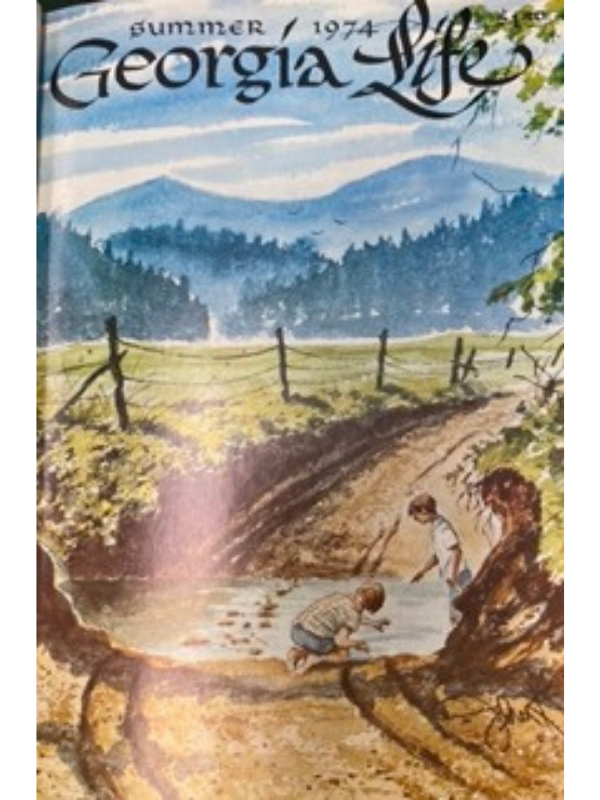
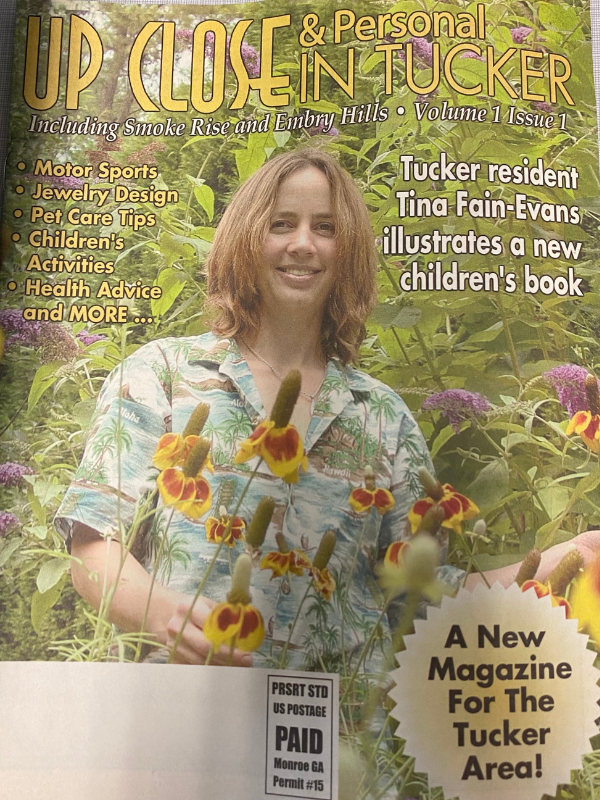
Georgia Life and Up Close and Personal in Tucker Magazines.
NMC: What have you all done recently that has impacted the community?
LC: Donated a set of 36 books to Brockett Elementary School 2nd graders. The books were selected by the teachers to support the DeKalb County Schools 2nd grade literacy standards in reading.
Donated funds to Everybody Wins Atlanta! an organization that seeks to improve the reading skills and develop a love of reading in students, grades 1st through 5th who are reading below grade level.
Donated funds to the Gwinnett Veterans Memorial Museum in Lawrenceville, GA.
Donated funds to the Decatur VA Hospital’s Psychosocial Rehabilitation Center.
Donated baby items for the Decatur VA program for baby showers for Women Veterans
Donated toys to ROTC Toys for Tots program.
Donated bottled water to the ROTC unit at Cross Keys High School.
Sponsored Bronze JROTC medals awarded to the outstanding cadet at DeKalb County Schools with ROTC programs.
Donated and delivered gift boxes of food, snacks, and water for three police departments and
two fire departments to thank them for their service to the community. (Decatur Police, Avondale Police, Clarkston Police, Decatur Fire, and Avondale Fire).
Supporting the Johns Homestead Preservation Project.
NMC: To people that may not understand or even agree with the DARs purposes or commitments, how would you try to engage with or re-explain it to them?
LC: The DAR is a lineage society where members honor their patriotic ancestors however it is a service organization that seeks to aid the people of today by promoting patriotism, the preservation of everyone’s history and improving everyone’s education. An example of the DAR promoting education is the Good Citizen Award that was established in 1934. This year 6,134 students were recognized by chapters as DAR Good Citizens with monetary awards of $467,818 from the chapters and states. Two national winners received $5,000 each.
As history and the narrative that should be taught and presented continues to be a topic for debate in the United States, one thing is certain. The DAR did provide a path that had previously not existed for women to be involved in the political and professional spheres. Additionally, they continue to provide opportunities for other to do so through their educational scholarship programs. In their youth, however, their magazine, in particular, helped give a voice and forum to these women, in addition to providing them an opportunity to celebrate and commemorate their national and local achievements.
Special thanks to Lee Camp (Registrar, Baron DeKalb Chapter NSDAR) for taking the time to answer my questions on behalf of the Baron DeKalb Chapter.
References
Baron DeKalb Chapter, NSDAR: Daughters of the American Revolution. Accessed April 2022. http://barondekalb.georgiastatedar.org/index.php.
D.A.R. Magazine. “Work of the Chapters.” Issue from May 1923. DeKalb History Center Archives.
“Early History of the National Society of the Daughters of the American Revolution.” Excerpts from The National Historical Magazine (October 1940) and from the Act of Incorporation. DeKalb History Center Archives.
Georgia Life Magazine. Issues from 1974 to 1980. DeKalb History Center Archives.
“History of Baron DeKalb D.A.R.” presented by Mrs. V.A.S. Moore. DeKalb History Center Archives.
Medlicott, Carol. “Constructing Territory, Constructing Citizenship: The Daughters of the American Revolution and ‘Americanisation’ in the 1920s.” Geopolitics 10, no. 1 (Spring 2005): 99–120. doi:10.1080/14650040590907686.
“‘The Founding Story’ of the N.S.D.A.R. 1890; Compiled and presented to the Baron DeKalb Chapter by Aline McKinney Dashiells; Feb 23, 1990.” DeKalb History Center Archives.
Up Close and Personal in Tucker. Volumes 1-7. DeKalb History Center Archives.





